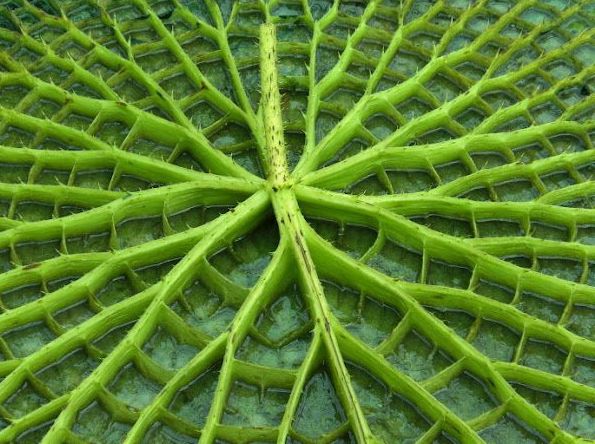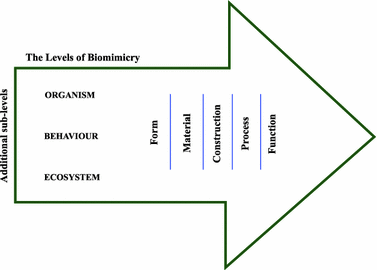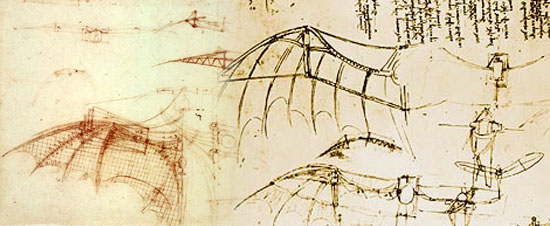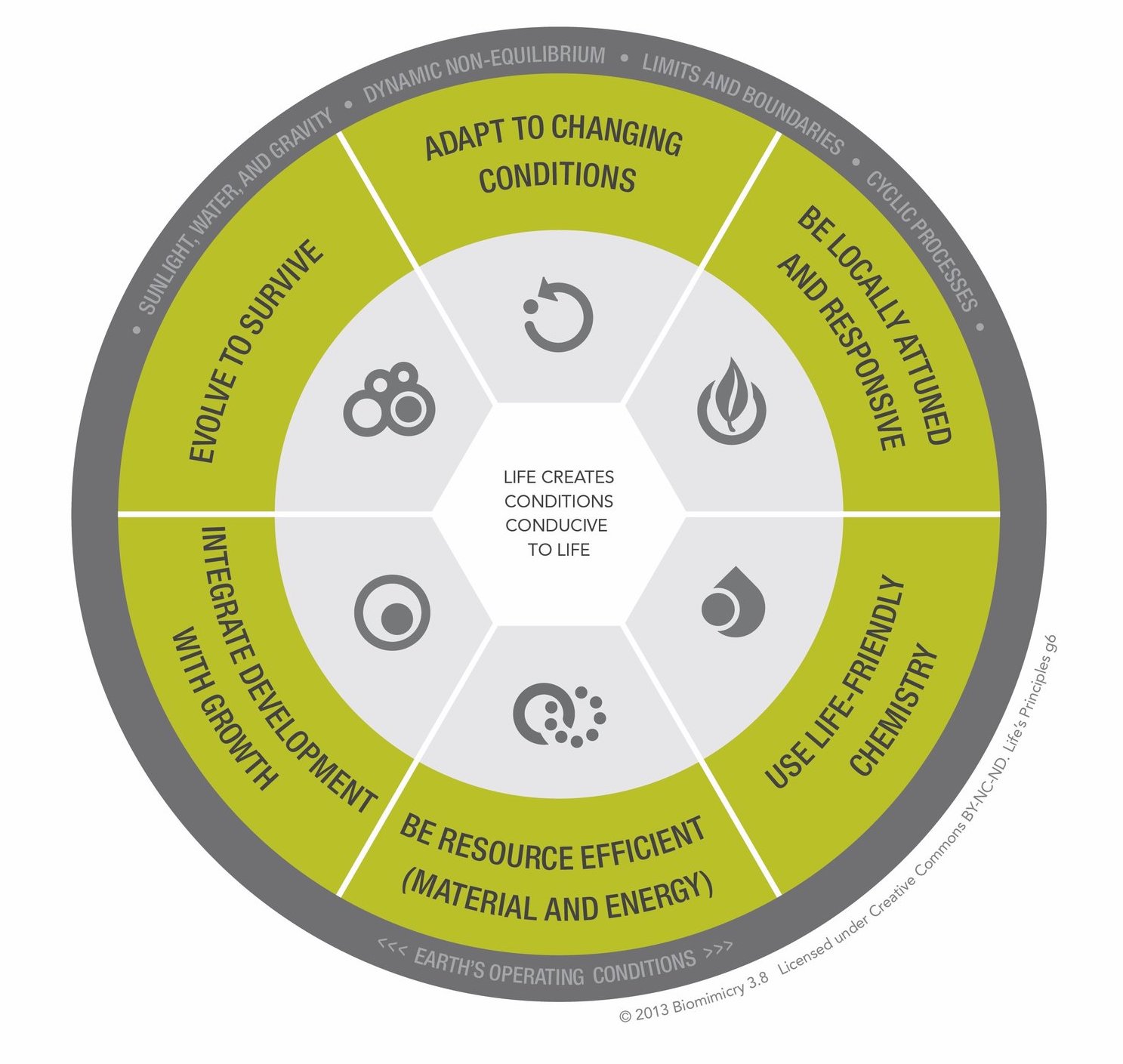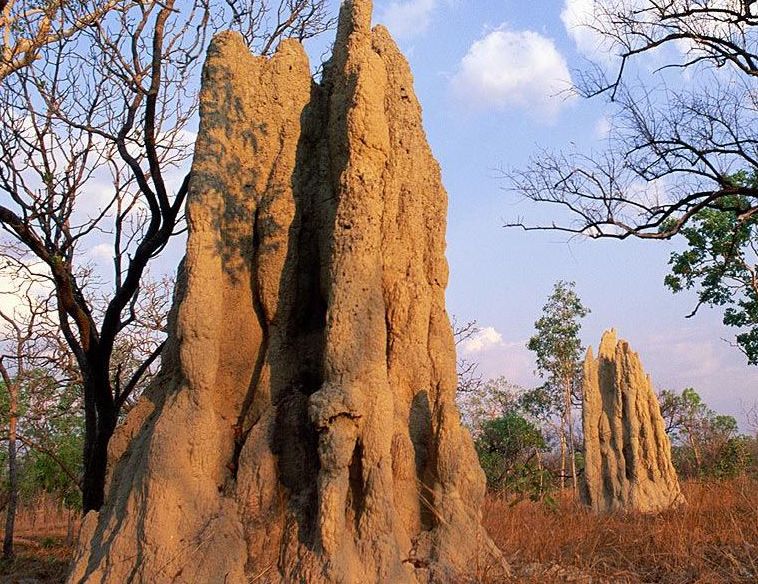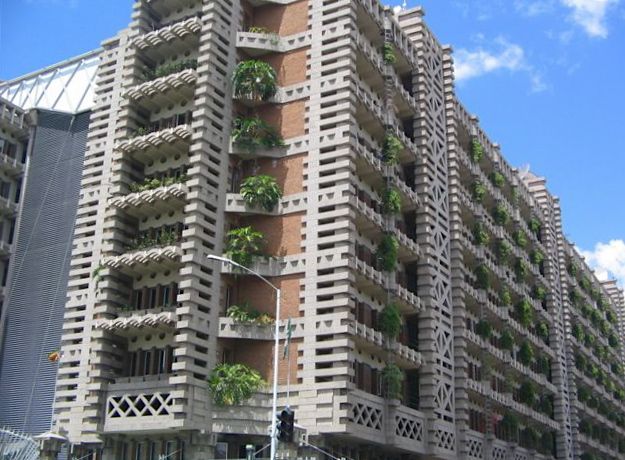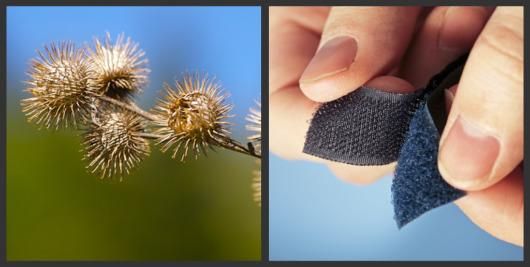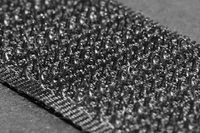Difference between revisions of "Biomimicry"
| (38 intermediate revisions by the same user not shown) | |||
| Line 1: | Line 1: | ||
{{Article | {{Article | ||
| + | |Image=Biomimicry.jpeg | ||
| + | |Summary=Biomimicry is the science and art of imitating the best biological ideas in nature to invent, improve and make human applications more sustainable. The term biomimicry comes from the contraction of the Greek words bios "life" and mimesis "imitate", literally "imitate life”.[https://www.biomimicrynl.org/wat-is-biomimicry.html BiomimicryNL2020] | ||
|Article===What is Biomimicry?== | |Article===What is Biomimicry?== | ||
| − | |||
Janine Benyus first used the term biomimicry in her book. ”Biomimicry innovation inspired by nature” in 1997. She used the following definition: | Janine Benyus first used the term biomimicry in her book. ”Biomimicry innovation inspired by nature” in 1997. She used the following definition: | ||
| Line 8: | Line 9: | ||
* Nature as a mentor. Biomimicry is a new way of looking at and appreciating nature. It introduces an era that is not based on what we can get from nature, but what we can learn from nature. | * Nature as a mentor. Biomimicry is a new way of looking at and appreciating nature. It introduces an era that is not based on what we can get from nature, but what we can learn from nature. | ||
| − | Life has existed on earth already for 3.8 billion years. This has developed from the first basic life forms to often very advanced life forms that we now encounter in nature. Since the creation of the first life forms, the organisms and (eco) systems on Earth have 'invented' what works, what is appropriate within the context and what contributes to survival. Nature is able to use things as energy and material in the most economical way. Often the solutions developed in nature surpass human solutions, in the use of technology but also in regard to aesthetics. The solutions developed in nature are often clever, sustainable and can adapt to changing circumstances. | + | Life has existed on earth already for 3.8 billion years. This has developed from the first basic life forms to often very advanced life forms that we now encounter in nature. Since the creation of the first life forms, the organisms and (eco) systems on Earth have 'invented' what works, what is appropriate within the context and what contributes to survival. Nature is able to use things as energy and material in the most economical way. Often the solutions developed in nature surpass human solutions, in the use of technology but also in regard to aesthetics. The solutions developed in nature are often clever, sustainable and can adapt to changing circumstances. [https://www.biomimicrynl.org/wat-is-biomimicry.html BiomimicryNL2020] |
| − | |||
==3 levels of biomimicry== | ==3 levels of biomimicry== | ||
Biomimicry can be applied on 3 levels | Biomimicry can be applied on 3 levels | ||
| − | + | # Organism level: Mimicking a specified organism. This could be the entire organism or a portion of the organism. | |
| − | + | # Behaviour level: Mimicking a specific type of behaviour or act that the organism does to survive or replicates on a daily basis in relation to a larger context. | |
| − | + | # Ecosystem level: Mimicking a specific ecosystem and what elements and principles are required for it to function successfully. Levels of biomimicry | |
Within each of this levels, a further five dimensions exist: | Within each of this levels, a further five dimensions exist: | ||
| − | + | * Form, what it looks like | |
| − | + | * Material, what it is made out of | |
| − | + | * Construction, how it is made | |
| − | + | * Process, how it works | |
| − | + | * Function, what it is able to do [http://www.iaeme.com/MasterAdmin/UploadFolder/IJCIET_09_02_062-2-3/IJCIET_09_02_062-2-3.pdf Dash Pragyan Shanta 2018] | |
I think the deeper you get into these dimensions the better and more ecological your design will be. For example the form dimension is only looked at what it looks like so it stays on the surface. At the function dimension you really mimic what it is able to do. Your design will function like the organism does in nature. | I think the deeper you get into these dimensions the better and more ecological your design will be. For example the form dimension is only looked at what it looks like so it stays on the surface. At the function dimension you really mimic what it is able to do. Your design will function like the organism does in nature. | ||
| − | |||
| − | |||
| + | [[File:3 levels of biomimicry.gif|none|1. 3 levels of biomimicry]] | ||
==Leornardo da Vinci== | ==Leornardo da Vinci== | ||
Since the publication of Benyus' book, biomimicry has received a lot of attention. Biomimicry is an emerging discipline but it is also an age-old practice. There are numerous examples from history where humans turned to nature for inspiration. “Go take your lessons in nature, that’s where our future is” a quote from Leonardo Da Vinci who was a keen observer of nature. He applied biomimicry to the study of birds in the hope of enabling human flight. He very closely observed the anatomy and flight of birds, and made numerous notes and sketches of his observations and countless sketches of proposed "flying machines". Although he was not successful with his own flying machine, his ideas lived on and were the source of inspiration for the Wright Brothers, who were also inspired by their observations of pigeons in flight. They finally did succeed in creating and flying the first airplane in 1903. | Since the publication of Benyus' book, biomimicry has received a lot of attention. Biomimicry is an emerging discipline but it is also an age-old practice. There are numerous examples from history where humans turned to nature for inspiration. “Go take your lessons in nature, that’s where our future is” a quote from Leonardo Da Vinci who was a keen observer of nature. He applied biomimicry to the study of birds in the hope of enabling human flight. He very closely observed the anatomy and flight of birds, and made numerous notes and sketches of his observations and countless sketches of proposed "flying machines". Although he was not successful with his own flying machine, his ideas lived on and were the source of inspiration for the Wright Brothers, who were also inspired by their observations of pigeons in flight. They finally did succeed in creating and flying the first airplane in 1903. | ||
| − | + | [https://www.wbdg.org/resources/biomimicry-designing-model-nature Vierra Stephanie 2019] | |
| − | + | [[File:Leonardo-fly.jpg|thumb|2.Leonardo da Vinci's concepts for flying machines]] | |
| − | [[File:Leonardo | + | |
| + | |||
| + | |||
| + | |||
| + | |||
| + | |||
| + | ''' "Go take your lessons in nature, that's where our future is." Leonardo da Vinci” ''' | ||
| − | |||
| − | In addition to biomimicry, biomimetics and bionics are also used. The similarity between all these terms lies in: learning from nature. While the sustainability aspect also plays an explicit role in biomimicry in biomimetics and bionics this plays a less important role and the emphasis is more on advancing technology. | + | In addition to biomimicry, biomimetics and bionics are also used. The similarity between all these terms lies in: learning from nature. While the sustainability aspect also plays an explicit role in biomimicry in biomimetics and bionics this plays a less important role and the emphasis is more on advancing technology. [https://www.biomimicrynl.org/wat-is-biomimicry.html# BiomimicryNL 2020] |
==Life's Principles== | ==Life's Principles== | ||
An important role in biomimicry is fulfilled by the Life's Principles developed by the Biomimicry institute. The basis of the Life's Principles is formed by the preconditions within which all life on earth takes place. These preconditions are: | An important role in biomimicry is fulfilled by the Life's Principles developed by the Biomimicry institute. The basis of the Life's Principles is formed by the preconditions within which all life on earth takes place. These preconditions are: | ||
| − | + | * Sunlight, water and gravity | |
| − | + | * Dynamic non-equilibrium | |
| − | + | * Limits and boundaries | |
| − | + | * Cyclic processes | |
| + | |||
Within these preconditions, life on earth has developed survival strategies. These survival strategies are the foundation of the Life's Principles. These survival strategies are: | Within these preconditions, life on earth has developed survival strategies. These survival strategies are the foundation of the Life's Principles. These survival strategies are: | ||
| − | + | * Adapt to changing conditions | |
| − | + | * Be locally attuned and responsive | |
| − | + | * Use life-friendly chemistry | |
| − | + | * Be resource efficient (material & energy) | |
| − | + | * Integrate development with growth | |
| − | + | * Evolve to survive | |
| − | The Life's Principles represent, as it were, the design guidelines from the ecosystem. This makes biomimicry ideally suited as a design tool for sustainability. The Life's Principles play an explicit role in the design process in biomimicry. | + | The Life's Principles represent, as it were, the design guidelines from the ecosystem. This makes biomimicry ideally suited as a design tool for sustainability. The Life's Principles play an explicit role in the design process in biomimicry. [https://www.greendeals.nl/sites/default/files/downloads/GD070-biomimicry_roadmap_2020_uitgebreid_bs_2.1_12092013.pdf Biomimicry Roadmap 2020]You could say to be a good biomimicry-based application you should be sustainable, function well, use as little energy as possible and prevent waste. |
| + | |||
| + | [[File:Life's principles .jpg|frame|center|3. Life's principle's]] | ||
==Eastgate Building== | ==Eastgate Building== | ||
| − | When looking at these factors I think a good example of biomimicry is the Eastgate Building in Harare (Zimbabwe), termites are infamous for creating some of the most elaborate ventilation systems for cooling on the planet. Even in some of the hottest places, these termite mounds remain exceptionally cool inside. Using an intricate network of intentionally air pockets, the mounds create a natural ventilation system using convection. The engineering firm Arup built an entire shopping centre in Zimbabwe based on this natural convection system. Currently the system uses 10 percent less energy than a traditional air-conditioned facility. | + | When looking at these factors I think a good example of biomimicry is the Eastgate Building in Harare (Zimbabwe), termites are infamous for creating some of the most elaborate ventilation systems for cooling on the planet. Even in some of the hottest places, these termite mounds remain exceptionally cool inside. Using an intricate network of intentionally air pockets, the mounds create a natural ventilation system using convection. The engineering firm Arup built an entire shopping centre in Zimbabwe based on this natural convection system. Currently the system uses 10 percent less energy than a traditional air-conditioned facility. [https://www.innovatie-estafette.nl/nieuws/nieuws/2020/02/27/biomimicry-vijf-voorbeelden-hoe-de-natuur-ons-inspireerde-tot-innovatie Innovatie Estafette 2020] |
| − | [[File:Termite mound.jpg|frame|right|Termite mound]] | + | [[File:Termite mound.jpg|frame|right|4. Termite mound]] |
| + | |||
| − | [[File:Eastgate Building.jpg|frame|right|Eastgate building]] | + | [[File:Eastgate Building.jpg|frame|right|5. Eastgate building]] |
| Line 72: | Line 80: | ||
I think biomimicry is really inspiring. Nature is super smart and there is a lot we can learn from nature as makers and designers. And I also think that designers could look at nature a lot more when facing a problem. Have a look into nature. How does nature solve this? We not always have to reinvent but can also learn how to adapt more. And we can create a deeper connection with nature by doing this. I also think that designers who use the smartness of nature do need to be critical when creating a biomimicry design. To not just copy what they see happening in nature but make sure the whole design is sustainable and looked at from the life’s principles like the survival strategies, you could use this as a tool for your design to see if your idea or design is really sustainable. | I think biomimicry is really inspiring. Nature is super smart and there is a lot we can learn from nature as makers and designers. And I also think that designers could look at nature a lot more when facing a problem. Have a look into nature. How does nature solve this? We not always have to reinvent but can also learn how to adapt more. And we can create a deeper connection with nature by doing this. I also think that designers who use the smartness of nature do need to be critical when creating a biomimicry design. To not just copy what they see happening in nature but make sure the whole design is sustainable and looked at from the life’s principles like the survival strategies, you could use this as a tool for your design to see if your idea or design is really sustainable. | ||
| − | Take Velcro (klittenband) for example, which is called a biomimicry innovation. George de Mestral invented Velcro in 1941 when taking a walk with his dog. After his walk, George noticed that his pants and his dog’s hair were covered in cockleburs. Curious why they stuck so well to these natural fibers, George de Mestral decided to study the burrs under a microscope. The burrs contained thousands of tiny hooks that bound themselves to nearly any fabric | + | Take Velcro (klittenband) for example, which is called a biomimicry innovation. George de Mestral invented Velcro in 1941 when taking a walk with his dog. After his walk, George noticed that his pants and his dog’s hair were covered in cockleburs. Curious why they stuck so well to these natural fibers, George de Mestral decided to study the burrs under a microscope. The burrs contained thousands of tiny hooks that bound themselves to nearly any fabric [https://www.velcro.com/blog/2020/07/a-mind-blowing-biomimicry-examples/ Velcro Companies 2020] Thus arose Velcro. This was a big innovation because of the new way of fastening things but when you look at the production of Velcro it requires fossil fuels and chemicals. So Velcro was looked at from a form level, but not at process and function level. At the function level, the Circular Economy is a good example of biomimicry, which is based on natural cycles and no waste just as in nature.We can also connect this theory to Cradle to Cradle because that theory is also based on the natural cycles that we encounter in nature. |
| + | |||
| + | [[File:Velcro.jpg|frame|center|6.Velcro]] | ||
| + | |||
| + | But unfortunately a whole circulair world is not possible yet, there will always be waste somewhere. In my major product design I work with those waste materials to show the potential and value of the material and thereby encourage people to change. I think biomimicry is super inspiring but I am not sure it’s for me maybe on a smaller scale. It’s quite complex, often about innovation and you need to take biomimicry seriously when creating a design inspired by nature that is actually sustainable. There is a lot to take in account. But I do think for some product designers this theory could work really well and I think there is a lot more to learn from nature. | ||
| + | |||
| + | |||
| + | '''Do you want to know more about Biomimicry? Take a look at the Biomimicry Institute website! https://biomimicry.org''' | ||
| + | |||
| + | ==Sources== | ||
| + | # https://www.biomimicrynl.org/wat-is-biomimicry.html | ||
| + | # http://www.iaeme.com/MasterAdmin/UploadFolder/IJCIET_09_02_062-2-3/IJCIET_09_02_062-2-3.pdf | ||
| + | # https://www.greendeals.nl/sites/default/files/downloads/GD070-biomimicry_roadmap_2020_uitgebreid_bs_2.1_12092013.pdf | ||
| + | # https://www.wbdg.org/resources/biomimicry-designing-model-nature | ||
| + | # https://www.innovatie-estafette.nl/nieuws/nieuws/2020/02/27/biomimicry-vijf-voorbeelden-hoe-de-natuur-ons-inspireerde-tot-innovatie | ||
| + | # https://www.velcro.com/blog/2020/07/a-mind-blowing-biomimicry-examples/ | ||
| − | |||
| + | ==Sources images== | ||
| + | # https://link.springer.com/chapter/10.1007/978-3-319-95972-6_11 | ||
| + | #https://misfitsarchitecture.com/2015/12/07/architectural-myths-22-biomimesis/leonardo-fly/ | ||
| + | # https://asknature.org/resource/lifes-principles/ | ||
| + | # https://www.treehugger.com/nature-blows-my-mind-miracles-termite-mounds-4857728 | ||
| + | # https://asknature.org/idea/eastgate-centre/ | ||
| + | # https://i.pinimg.com/originals/64/6e/89/646e89f248760848a5567e38887c6976.jpg | ||
| − | |||
| − | |||
| − | |||
| − | |||
| − | |||
| − | |||
| − | |||
| − | + | By: Katja Heuveling | |
}} | }} | ||
{{YearSelector | {{YearSelector | ||
Latest revision as of 14:22, 30 November 2020
The wikipage input value is empty (e.g. SomeProperty::, [[]]) and therefore it cannot be used as a name or as part of a query condition.
What is Biomimicry?
Janine Benyus first used the term biomimicry in her book. ”Biomimicry innovation inspired by nature” in 1997. She used the following definition:
- Nature as a model. Biomimicry is the art and science that studies, uses as inspiration and imitates strategies from nature to solve problems in our human societies, for example a solar cell inspired by a leaf.
- Nature as the benchmark. Biomimicry applies ecological measures to determine the "suitability "of innovations. Nature has learned: What works. What is appropriate. Which is permanent.
- Nature as a mentor. Biomimicry is a new way of looking at and appreciating nature. It introduces an era that is not based on what we can get from nature, but what we can learn from nature.
Life has existed on earth already for 3.8 billion years. This has developed from the first basic life forms to often very advanced life forms that we now encounter in nature. Since the creation of the first life forms, the organisms and (eco) systems on Earth have 'invented' what works, what is appropriate within the context and what contributes to survival. Nature is able to use things as energy and material in the most economical way. Often the solutions developed in nature surpass human solutions, in the use of technology but also in regard to aesthetics. The solutions developed in nature are often clever, sustainable and can adapt to changing circumstances. BiomimicryNL2020
3 levels of biomimicry
Biomimicry can be applied on 3 levels
- Organism level: Mimicking a specified organism. This could be the entire organism or a portion of the organism.
- Behaviour level: Mimicking a specific type of behaviour or act that the organism does to survive or replicates on a daily basis in relation to a larger context.
- Ecosystem level: Mimicking a specific ecosystem and what elements and principles are required for it to function successfully. Levels of biomimicry
Within each of this levels, a further five dimensions exist:
- Form, what it looks like
- Material, what it is made out of
- Construction, how it is made
- Process, how it works
- Function, what it is able to do Dash Pragyan Shanta 2018
I think the deeper you get into these dimensions the better and more ecological your design will be. For example the form dimension is only looked at what it looks like so it stays on the surface. At the function dimension you really mimic what it is able to do. Your design will function like the organism does in nature.
Leornardo da Vinci
Since the publication of Benyus' book, biomimicry has received a lot of attention. Biomimicry is an emerging discipline but it is also an age-old practice. There are numerous examples from history where humans turned to nature for inspiration. “Go take your lessons in nature, that’s where our future is” a quote from Leonardo Da Vinci who was a keen observer of nature. He applied biomimicry to the study of birds in the hope of enabling human flight. He very closely observed the anatomy and flight of birds, and made numerous notes and sketches of his observations and countless sketches of proposed "flying machines". Although he was not successful with his own flying machine, his ideas lived on and were the source of inspiration for the Wright Brothers, who were also inspired by their observations of pigeons in flight. They finally did succeed in creating and flying the first airplane in 1903. Vierra Stephanie 2019
"Go take your lessons in nature, that's where our future is." Leonardo da Vinci”
In addition to biomimicry, biomimetics and bionics are also used. The similarity between all these terms lies in: learning from nature. While the sustainability aspect also plays an explicit role in biomimicry in biomimetics and bionics this plays a less important role and the emphasis is more on advancing technology. BiomimicryNL 2020
Life's Principles
An important role in biomimicry is fulfilled by the Life's Principles developed by the Biomimicry institute. The basis of the Life's Principles is formed by the preconditions within which all life on earth takes place. These preconditions are:
- Sunlight, water and gravity
- Dynamic non-equilibrium
- Limits and boundaries
- Cyclic processes
Within these preconditions, life on earth has developed survival strategies. These survival strategies are the foundation of the Life's Principles. These survival strategies are:
- Adapt to changing conditions
- Be locally attuned and responsive
- Use life-friendly chemistry
- Be resource efficient (material & energy)
- Integrate development with growth
- Evolve to survive
The Life's Principles represent, as it were, the design guidelines from the ecosystem. This makes biomimicry ideally suited as a design tool for sustainability. The Life's Principles play an explicit role in the design process in biomimicry. Biomimicry Roadmap 2020You could say to be a good biomimicry-based application you should be sustainable, function well, use as little energy as possible and prevent waste.
Eastgate Building
When looking at these factors I think a good example of biomimicry is the Eastgate Building in Harare (Zimbabwe), termites are infamous for creating some of the most elaborate ventilation systems for cooling on the planet. Even in some of the hottest places, these termite mounds remain exceptionally cool inside. Using an intricate network of intentionally air pockets, the mounds create a natural ventilation system using convection. The engineering firm Arup built an entire shopping centre in Zimbabwe based on this natural convection system. Currently the system uses 10 percent less energy than a traditional air-conditioned facility. Innovatie Estafette 2020
Conclusion
I think biomimicry is really inspiring. Nature is super smart and there is a lot we can learn from nature as makers and designers. And I also think that designers could look at nature a lot more when facing a problem. Have a look into nature. How does nature solve this? We not always have to reinvent but can also learn how to adapt more. And we can create a deeper connection with nature by doing this. I also think that designers who use the smartness of nature do need to be critical when creating a biomimicry design. To not just copy what they see happening in nature but make sure the whole design is sustainable and looked at from the life’s principles like the survival strategies, you could use this as a tool for your design to see if your idea or design is really sustainable.
Take Velcro (klittenband) for example, which is called a biomimicry innovation. George de Mestral invented Velcro in 1941 when taking a walk with his dog. After his walk, George noticed that his pants and his dog’s hair were covered in cockleburs. Curious why they stuck so well to these natural fibers, George de Mestral decided to study the burrs under a microscope. The burrs contained thousands of tiny hooks that bound themselves to nearly any fabric Velcro Companies 2020 Thus arose Velcro. This was a big innovation because of the new way of fastening things but when you look at the production of Velcro it requires fossil fuels and chemicals. So Velcro was looked at from a form level, but not at process and function level. At the function level, the Circular Economy is a good example of biomimicry, which is based on natural cycles and no waste just as in nature.We can also connect this theory to Cradle to Cradle because that theory is also based on the natural cycles that we encounter in nature.
But unfortunately a whole circulair world is not possible yet, there will always be waste somewhere. In my major product design I work with those waste materials to show the potential and value of the material and thereby encourage people to change. I think biomimicry is super inspiring but I am not sure it’s for me maybe on a smaller scale. It’s quite complex, often about innovation and you need to take biomimicry seriously when creating a design inspired by nature that is actually sustainable. There is a lot to take in account. But I do think for some product designers this theory could work really well and I think there is a lot more to learn from nature.
Do you want to know more about Biomimicry? Take a look at the Biomimicry Institute website! https://biomimicry.org
Sources
- https://www.biomimicrynl.org/wat-is-biomimicry.html
- http://www.iaeme.com/MasterAdmin/UploadFolder/IJCIET_09_02_062-2-3/IJCIET_09_02_062-2-3.pdf
- https://www.greendeals.nl/sites/default/files/downloads/GD070-biomimicry_roadmap_2020_uitgebreid_bs_2.1_12092013.pdf
- https://www.wbdg.org/resources/biomimicry-designing-model-nature
- https://www.innovatie-estafette.nl/nieuws/nieuws/2020/02/27/biomimicry-vijf-voorbeelden-hoe-de-natuur-ons-inspireerde-tot-innovatie
- https://www.velcro.com/blog/2020/07/a-mind-blowing-biomimicry-examples/
Sources images
- https://link.springer.com/chapter/10.1007/978-3-319-95972-6_11
- https://misfitsarchitecture.com/2015/12/07/architectural-myths-22-biomimesis/leonardo-fly/
- https://asknature.org/resource/lifes-principles/
- https://www.treehugger.com/nature-blows-my-mind-miracles-termite-mounds-4857728
- https://asknature.org/idea/eastgate-centre/
- https://i.pinimg.com/originals/64/6e/89/646e89f248760848a5567e38887c6976.jpg
Links
CONTRIBUTE
Feel free to contribute to Beyond Social.
Biomimicry is about being inspired by nature.
